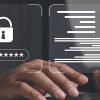Over the past few years, the ability to work from anywhere has been embraced for its flexibility and convenience. However, as more people adopt remote working, the risks we face as individuals and employees change. While trust is typically assumed in an office environment, working outside of that setting, such as from home or in a coffee shop, can dramatically alter the level of risk.
While security professionals can’t guarantee that employees won’t become victims of cyber threats even within office walls, there are evolving tools and best practices for end user cyber security, especially as remote work becomes more prevalent. The focus is on securing the environment around your laptop, including yourself.
Public Wi-Fi networks in places like coffee shops can pose a significant threat as they often lack robust security configurations. This makes them vulnerable to cyber attacks, such as exploiting router vulnerabilities or intercepting sensitive data. While using corporate tools like virtual private networks (VPNs) can mitigate these issues, it’s important to remain aware. When using home Wi-Fi networks, it’s essential to secure them with strong, unique passwords, regular firmware updates, and, when possible, VPNs to encrypt data traffic.
Using personal devices for work, known as bring your own device (BYOD), increases the risks. Personal laptops may not have the same security measures as company devices, leaving them more susceptible to malware infections, unauthorized access, and data breaches. Endpoint security, software patching, and device encryption become crucial in mitigating these risks and maintaining protection across home devices.
An example from 2023 highlights how a threat actor compromised a LastPass software engineer’s home network, resulting in the theft of backups and internal system secrets. This demonstrates the need for continued diligence in securing home networks.
Phishing attacks, which attempt to trick individuals into divulging sensitive information or installing malware, are on the rise and growing more sophisticated. Both office-based and remote workers encounter an increasing volume of malicious emails. Robust email security measures and ongoing user education are essential in combating these threats. Following company security guidelines is also crucial in minimizing security risks.
Zero-trust architecture is a cyber security approach that assumes no implicit trust, even among internal users or systems. With the complexity of modern IT environments and the rise of remote work, it’s necessary to regularly verify user identity, have robust access control, and ensure secure communication. Multifactor authentication (MFA) has seen widespread adoption as part of zero-trust architectures, providing added security by requiring multiple authentication factors.
As employees work from different locations and personal setups, the focus on cyber security must extend to the home environment. Basic cyber hygiene, such as following company security guidelines and keeping software updated, is essential. As cyber threats evolve and become more sophisticated, it is the responsibility of cyber security experts to stay informed and ensure the best levels of protection for end users.






